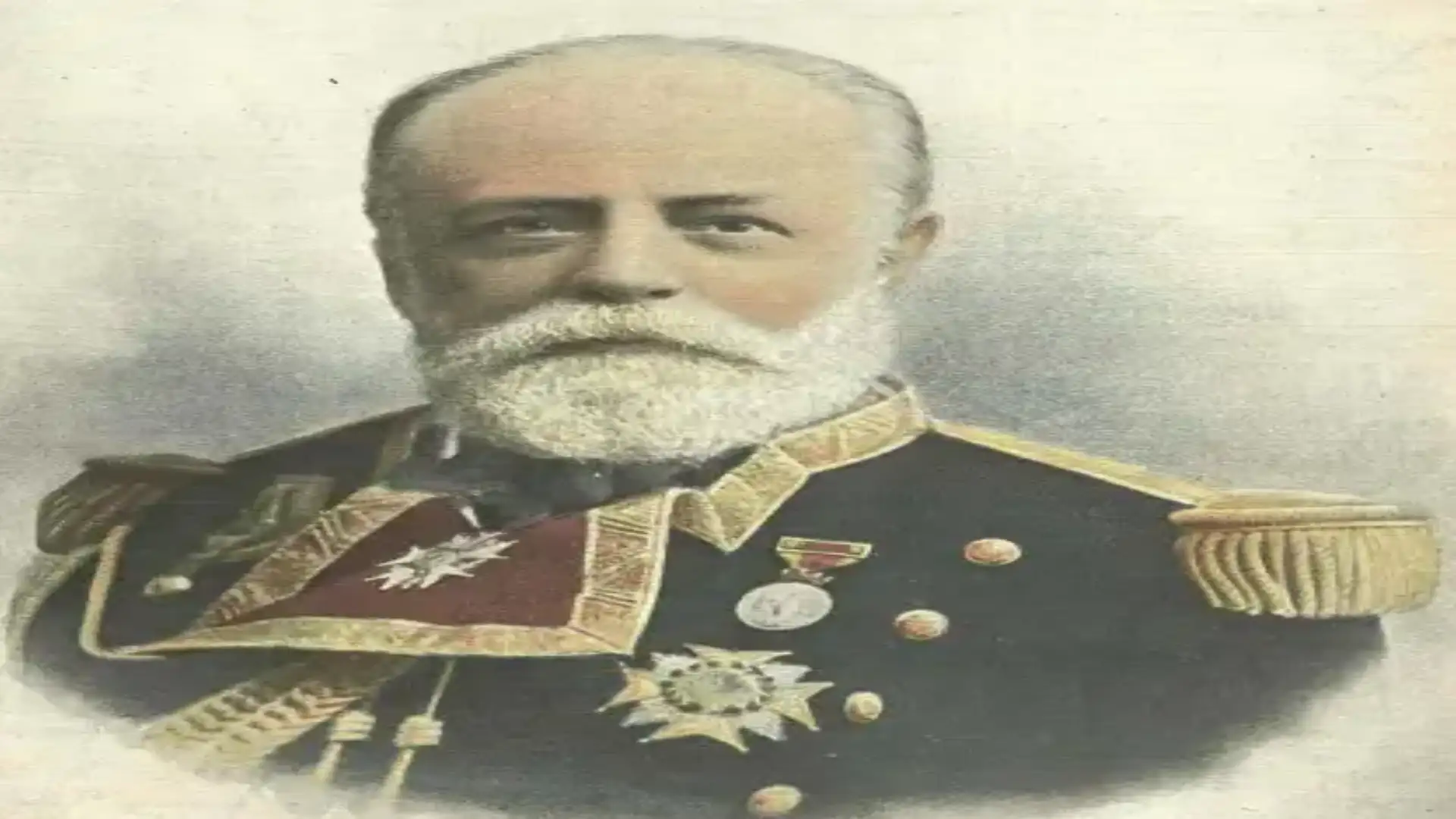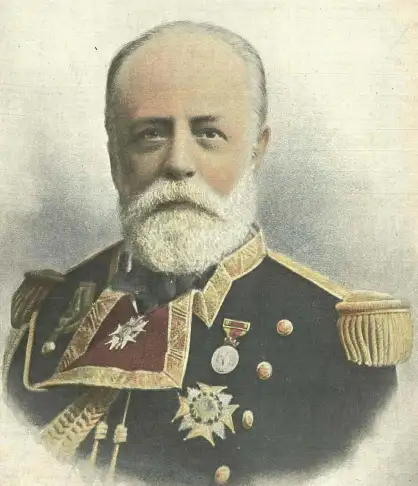
The Spanish Navy calls Colau's attitude towards Cervera "disappointing"
The Spanish Navy calls Colau's attitude towards Cervera "disappointing"
The demonstrations of the Mayor of Barcelona, Ada Colau, on the occasion of the change of name in the street dedicated to the Admiral in the City Condal for that of the Galic satirical humorist Pepe Rubianes, have raised ampoules not only in the Spanish Navy, but in the people of the sea, amen in general and to a large extent of the Spanish citizens.
His dedications to "Fascist" the glorious Spanish admiral, when the "fascism did not exist"are comparable to the fact that Mrs. Colau claims that she inherited from her grandparents a silver crucifix from the second century before Christ... the obvious intellectual limitations of the Barcelona mandataria, do not exempt her from the gravity and its consequences, from all the barbarities that have come out of her mouth on this painful subject, lacking the slightest institutional courtesy and education that a public character of its importance should possess.
The Spanish Navy has made public through its AJEMA, Admiral Teodoro López Calderon, this written in which with great quality and historical rigour is demonstrated the serious error of Ada Colau, in the comments made on the memory of Pascual Cervera and Topete:
"The Navy, as a secular institution, whose values and traditions have been forged through a long history, has the obligation to ensure the good name and honor of its members, especially those who have distinguished themselves by some relevant fact faced with dignity and spirit of service.
Recently, the City Council of Barcelona has made a decision affecting Vice Admiral D. PASCUAL CERVERA TOPETE, Commander of the Operations Squadron of the Netherlands during the events that led to the loss of Cuba as Spanish territory, which, as reported in the media, has been based on a negative assessment of the admiral's attitude that damages his honorability and respectability.
The Navy keeps the service sheets of its members throughout history, which record the contrasting facts of its activity during its years of service. In view of the qualification given to the admiral by the authority of the City Council of Barcelona to justify his decision, I provide a brief review of this marine insignia, according to the historical data contained in the archives of the Navy:
Nace D. Pascual in Medina Sidonia, Cadiz, on 18 February 1839, entering the Military Naval College of San Carlos (San Fernando, Cadiz) on 30 June 1852, when he was only 13 years old, and receiving his office as a ship ensign at only 21 years old.
If you review the long and bright service sheet of D. Pascual Cervera Topete, there is no doubt that there can be clear signs of loyalty, courage and sacrifice for service to Spain. The first proof of this was his rise to a ship lieutenant for war purposes during his stay in the Philippines in the first years of his military life, in the fight against the Malay rebels and in the fighting that took place during the assaults on the fort of the Cotta de Pagalugan, defending the homeland and repressing the Filipino and Joloan piracy that took place before lives and haciendas.
Also during his first stay in the Philippines he raised nautical cards on intricate and dangerous coasts, as well as aired shipwrecks and endangered fishermen.
Back in the Peninsula, between 1865 and 1868 he was in charge of the formation of guardians. As captain of the frigate, he participated actively in the cantonal struggle, defending the First Spanish Republic, both in Cartagena and in Cadiz, being named benemérito of the Homeland.
He then returned to the Philippines, where he exercised command of the "Saint Lucia" corbeta, intervening in war actions in Mindanao, and in 1876 was appointed Governor of the island of Joló.
He returned to the Peninsula and held various positions at the Ministry of the Navy. In 1879 he was commander of the ship school of guards and in 1880 he was appointed Military Commander of the Navy of Cartagena.
Subsequently, as Chairman of the Committee on the construction of the "Pelayo" battleship and during his stay in France, he was granted the decoration of the French Legion of Honor.
Between December 14, 1892 and March 23, 1893, he served as Minister of the Navy in a liberal government chaired by Sagasta, which shows that Admiral Cervera had a certainly liberal thought for his time. In the 1893-94 legislature he was elected as senator by Cadiz, being during this period Head of the Spanish Navy Commission in London.
After this parenthesis in his military career, he returned to active service in positions of the Navy and in 1896 was appointed General Commander of the Arsenal de la Carraca (San Fernando, Cadiz).
But, above all, Mr Pascual Cervera Topete is known and will be remembered for the performance of his duty during Cuba's defence against the claims of the United States in 1898, following orders received to face the enemy even knowing the inferiority of the Spanish squadron with respect to that of the United States Navy, which resulted in the loss of the squadron under his command and of the Spanish overseas territories.
After the loss of the squadron in Cuba, he was taken prisoner by the United States, along with the survivors of the endowments of his ships. On returning to Spain and following the dismissal of the case (war council) that was initiated for the loss of the squadron in Cuba, in the 1903-04 legislature he was appointed a life senator.
In 1902 he was given the first public office after the War, Chief of Central Staff of the Navy, to which he would follow, in subsequent years, that of a member of the Supreme Council of War and Navy; Captain General of the Maritime Department of Ferrol; Head of the Central Jurisdiction and President of the Board of Adjudication of the ships of the new squadron in project.
He died in Puerto Real (Cadiz) on 3 April 1909, having reached the rank of Vice Admiral. Since June 19, 1916, his remains rest in the "Pantheon de Marines Ilustres de San Fernando" (Cadiz), considering that Mr Pascual Cervera Topete was a hero to history.
On the other hand, and far from the content of his service sheet, the respect that Admiral Cervera awoke in his former enemies is evident in places thousands of kilometers from Spain:
The two most important cities in the Republic of Cuba exhibit busts of Admiral Cervera, without any kind of complex. One is located in the Castillo del Morro of Santiago de Cuba (since 2005) and the other in the Castillo de la Real Fuerza, in Havana (since 2012).
In 2015 the Cuban government organized a tribute to the Spanish sailors who fell in the 1898 War on the eastern coast of Cuba. At 12 meters deep, in the area where the sunken remains of the Cruise "Admiral Oquendo" were laid a bronze tarja (tombstone), and two divers, one Catalan and another Basque, deposited a crown of laurel around it, in recognition of the Cubans to the Spanish sailors killed in the fight against the United States Navy.
For the Navy the treatment and qualification given to Admiral Cervera by the municipal authority of Barcelona, a city of great marine tradition and very linked to the Navy, with which he has always maintained a close relationship of affection and cooperation, has been disappointing. "
AG. Theodoro López Calderón
© 2024 Nautica Digital Europe - www.nauticadigital.eu












